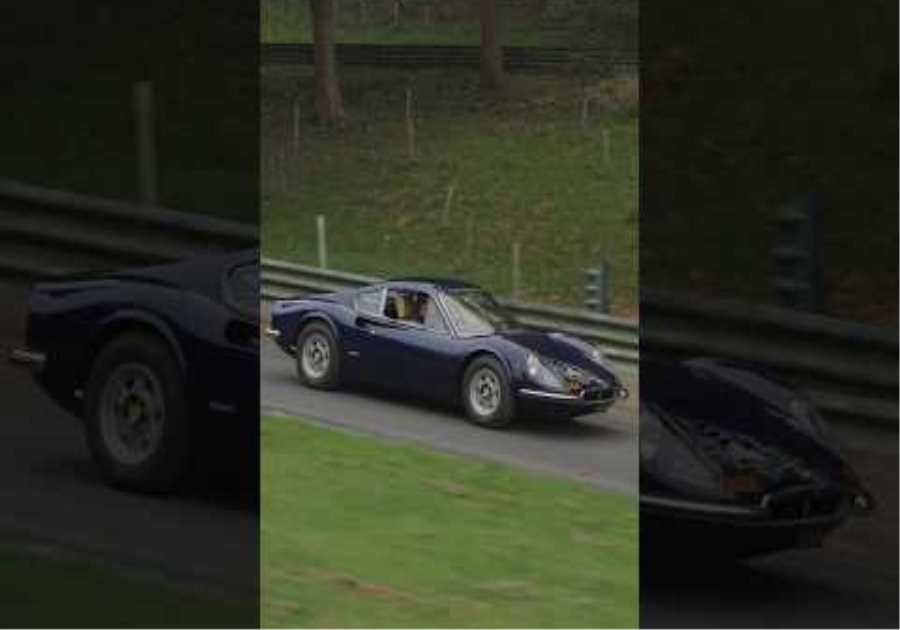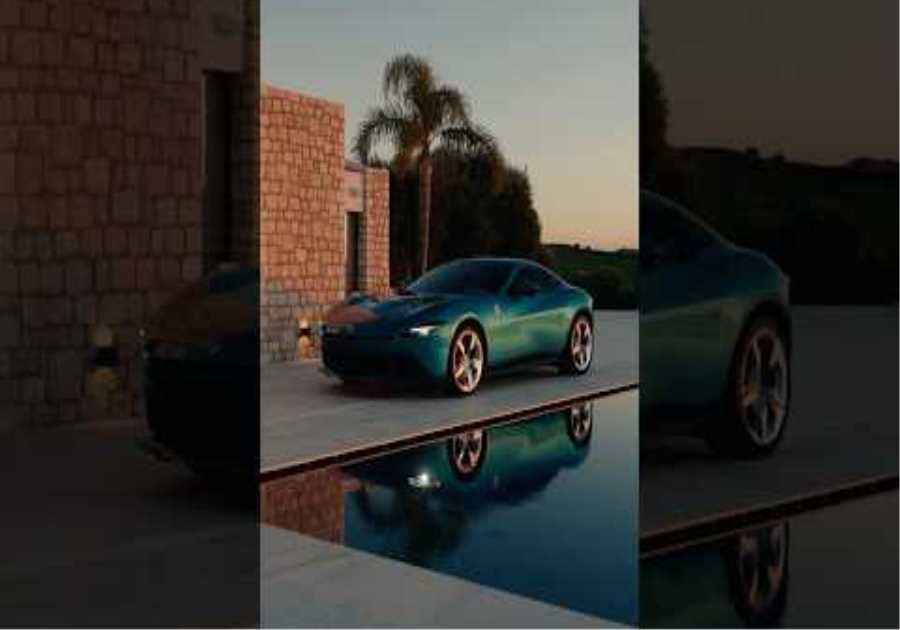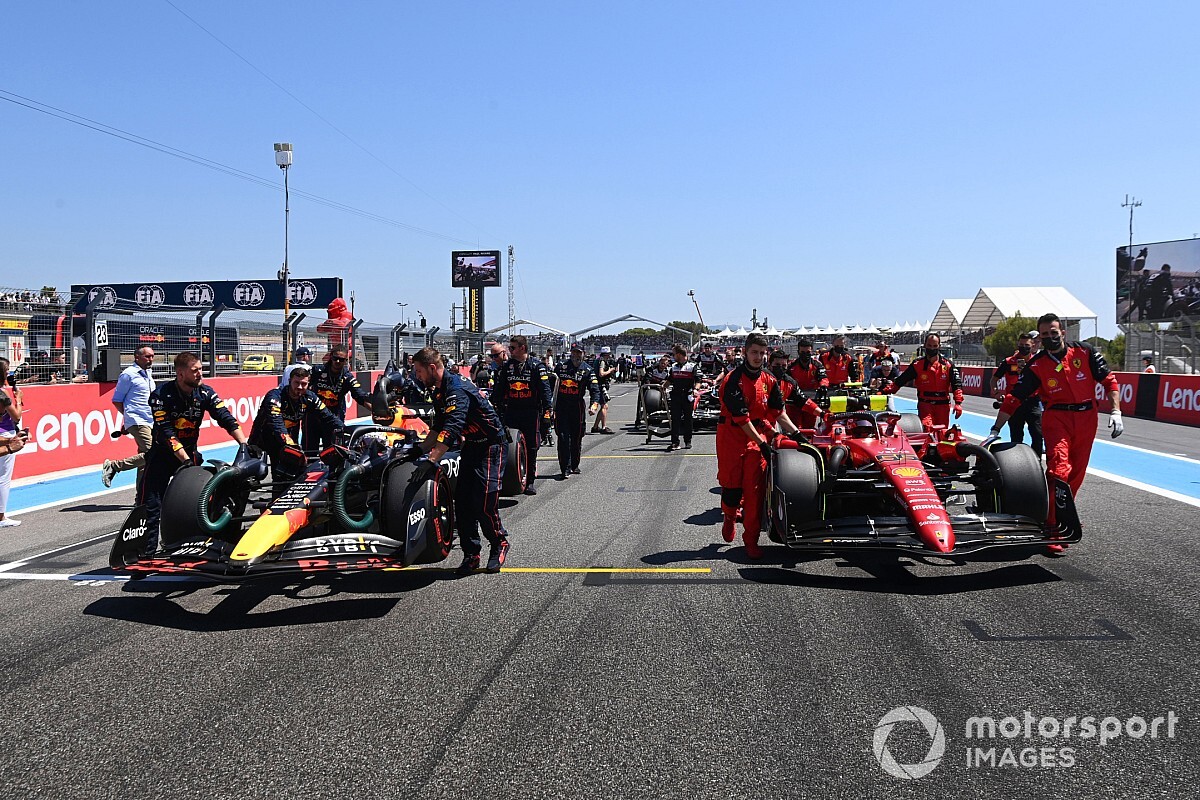
With teams continuing to find extra performance from the underfloor aerodynamics given its importance, both opted to make changes in this area of the car for the French Grand Prix.
And it appears there is an intriguing detailed development battleground opening up between them when it comes to trying to maximize how the airflow is directed towards the floor by fences.
Red Bull, having run the twin outer fence arrangement since the start of the season, decided to abandon it as part of its latest update. Instead, the inner of those two fences was moved further inboard.
Placing the third fence in closer proximity to the two inboard of it not only has an impact on the behavior of the airflow as it enters the tunnel, but it will likely also result in this third fence stretching back underneath the floor like its siblings inboard.
Previously it had stopped short to help power up the vortex structure produced by the outermost fence.
This fight between the two uses of the third fence also means that it’s not as tall as it was before, instead sitting within the bounds of the leading edge’s floor line, rather than above it, in order it worked in conjunction with the outermost fence.
Red Bull RB18 rear brake duct comparison
Photo by: Giorgio Piola
Red Bull also made a subtle change at the rear of the car, with an additional vane added within the bounds of the rear brake’s inlet scoop (red arrow, old specification inset).
The result of the changes will be minimal but will facilitate a better route for the airflow to take into the pipework alongside which feeds the caliper.

Ferrari F1-75 turning vanes comparison
Photo by: Giorgio Piola
The changes made by Ferrari were also focused on the tunnel entrance for the underfloor, with visible changes made to the height of the floor’s leading edge and the fences.
As we can see in the comparison above, Ferrari has decided to create more of a two-tier arrangement, with the inner portion of the floor’s leading edge remaining nearer to the upper limit imposed by the regulations, whilst the outer section has been flattened out.
This lowering of the tunnel entrance in the outer section also means that the upper surface of the floor is now divided into two sections, with the lower section more or less aligned with the edge of the sidepod and the inner portion feeds into the sidepod’s undercut.
There’s also changes to the outer fence, as it’s both taller and has been extended forward. There’s also a lower cut out in the forward section of the fence, as can be seen in the lower inset, which shows the previous specification.
The dotted lines show how the team have moved on from the first version of the fence, which was low, short and level with the floor.
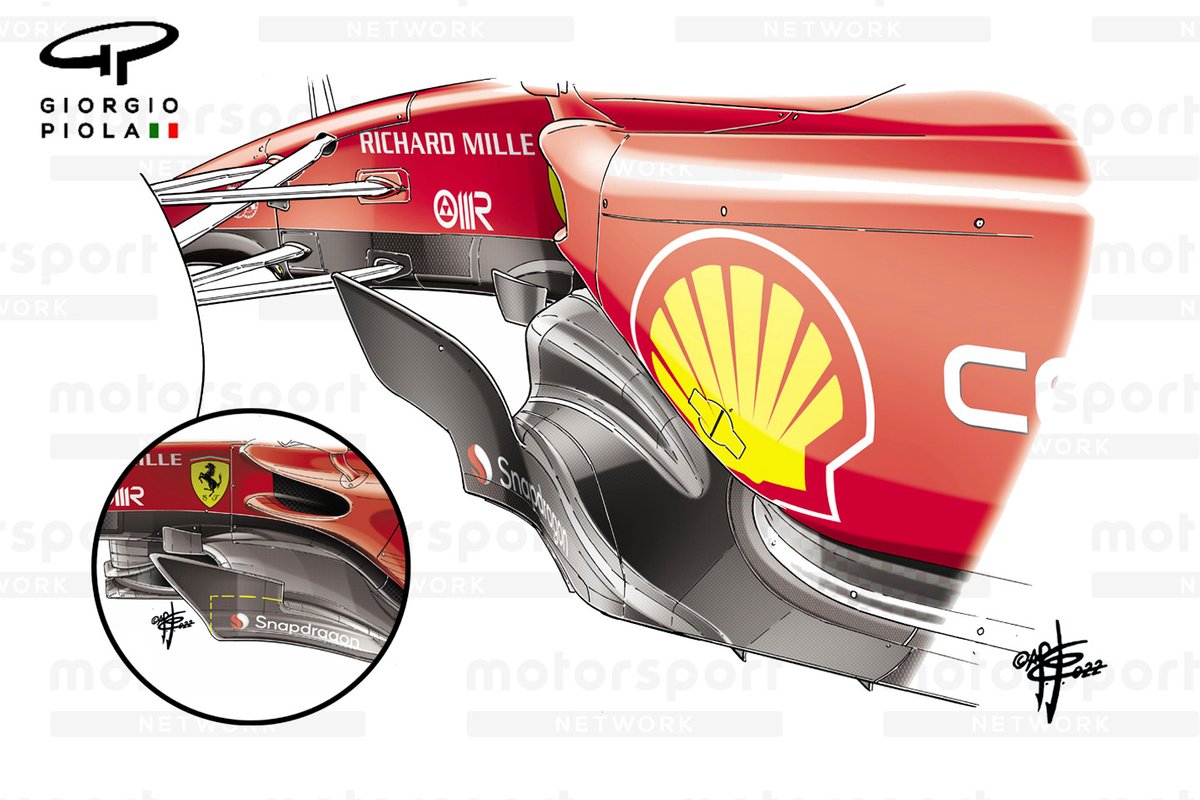
Ferrari F1-75 new floor comparison
Photo by: Giorgio Piola
The extent of the floor’s redesign does carry over into the underfloor too, as witnessed when Charles Leclerc’s car was hoisted away from the circuit. The biggest change here comes with the boat-shaped bodywork that bridges the gap between the step and reference planes.
Here Ferrari appears to have been schooled by Red Bull, as it has narrowed the entire section but more so towards the front in an effort to improve the relationship with the fences which meander out towards the floor’s edge.
Mercedes tweaks
Mercedes introduced a substantial update package at the British Grand Prix, which included a volume increase around the inboard front suspension, small modifications to the bib wing and chassis canards, with more extensive alterations made to the floor.
As such, there was nothing on the menu in Austria but it followed its Silverstone changes with another batch of smaller optimisations in France in order that it can balance its development out across the course of the season.
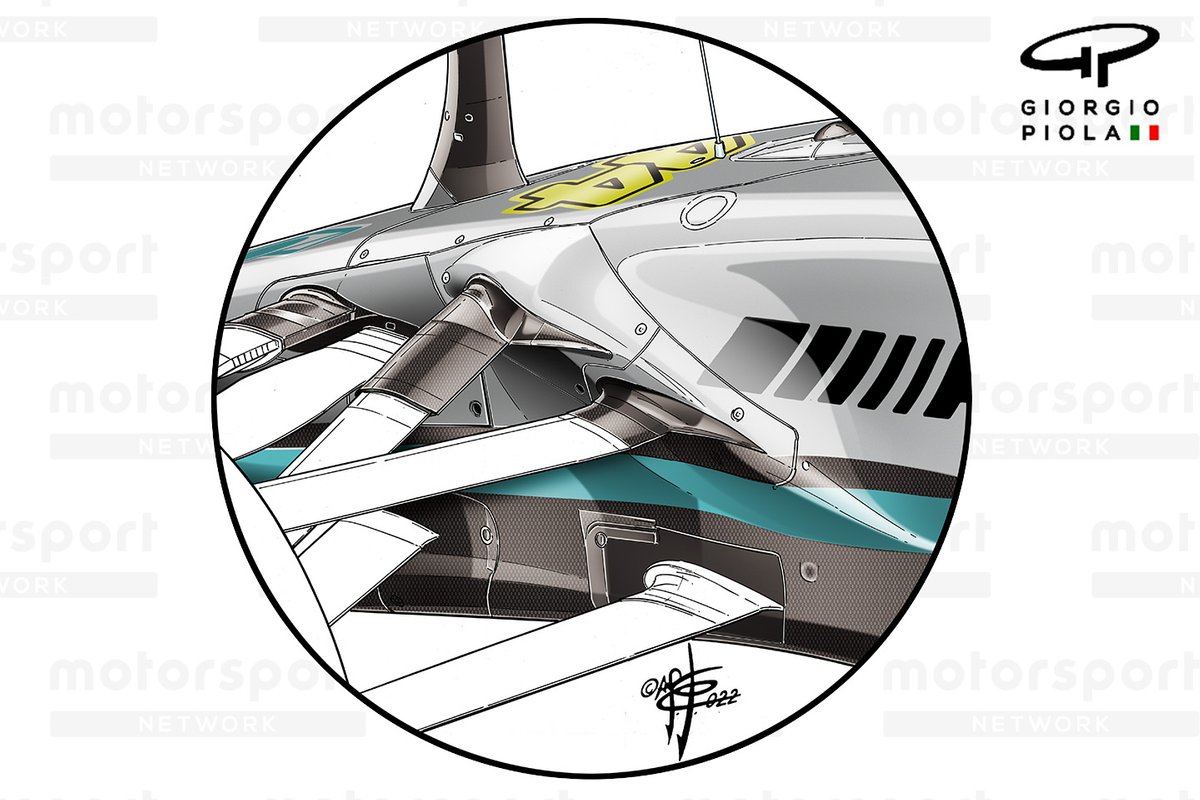
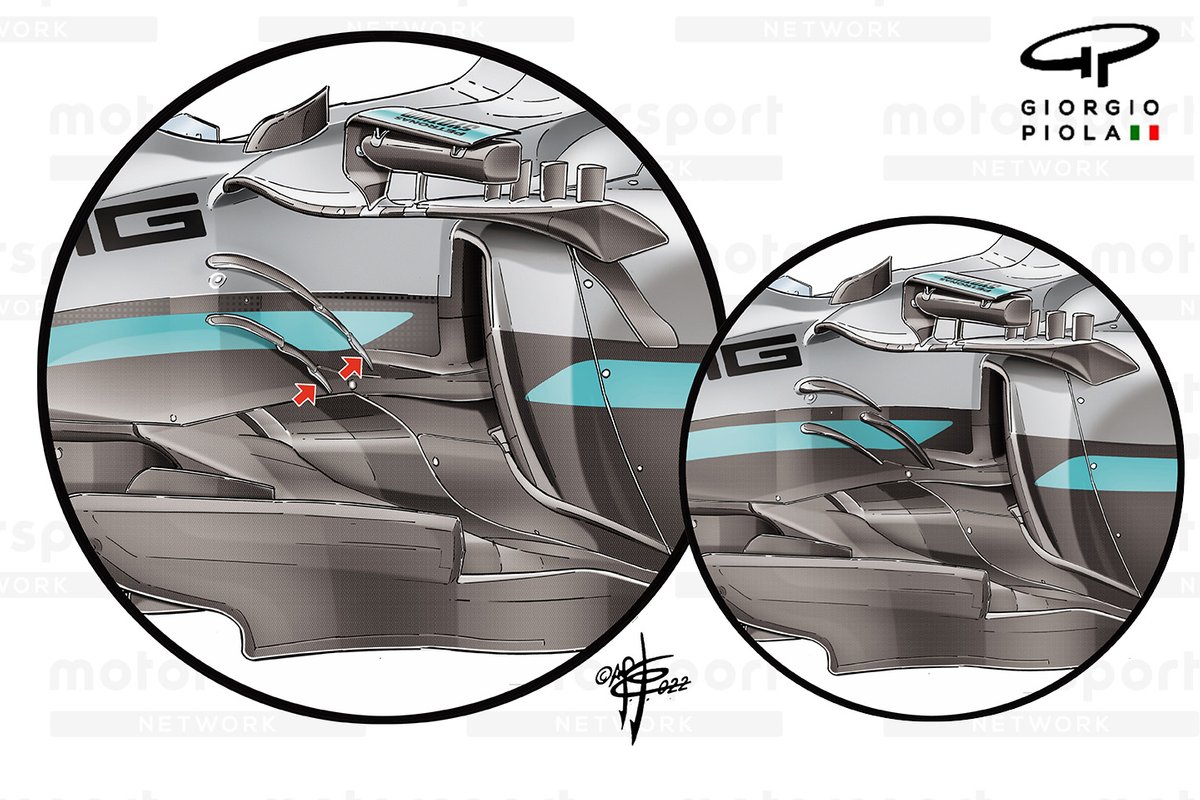
As part of this update, the team made an alteration to its front brake duct, with the rear facing outlet not only being increased in size but an interesting Russian nesting doll-like approach has been taken with the fins that lie within.
As we can see with its old arrangement (inset, below) the team already had the outlet segmented in order that the various airflow channels within had their own exit.
However, with the new arrangement, it appears that the team has simply opted to reject that heat and airflow into the larger outlet and then manage the flow with smaller, similarly S-shaped fins.
You’ll also note the different color of the new inserts, which are not only 3D printed but also have a surface coating to help with managing the heat.
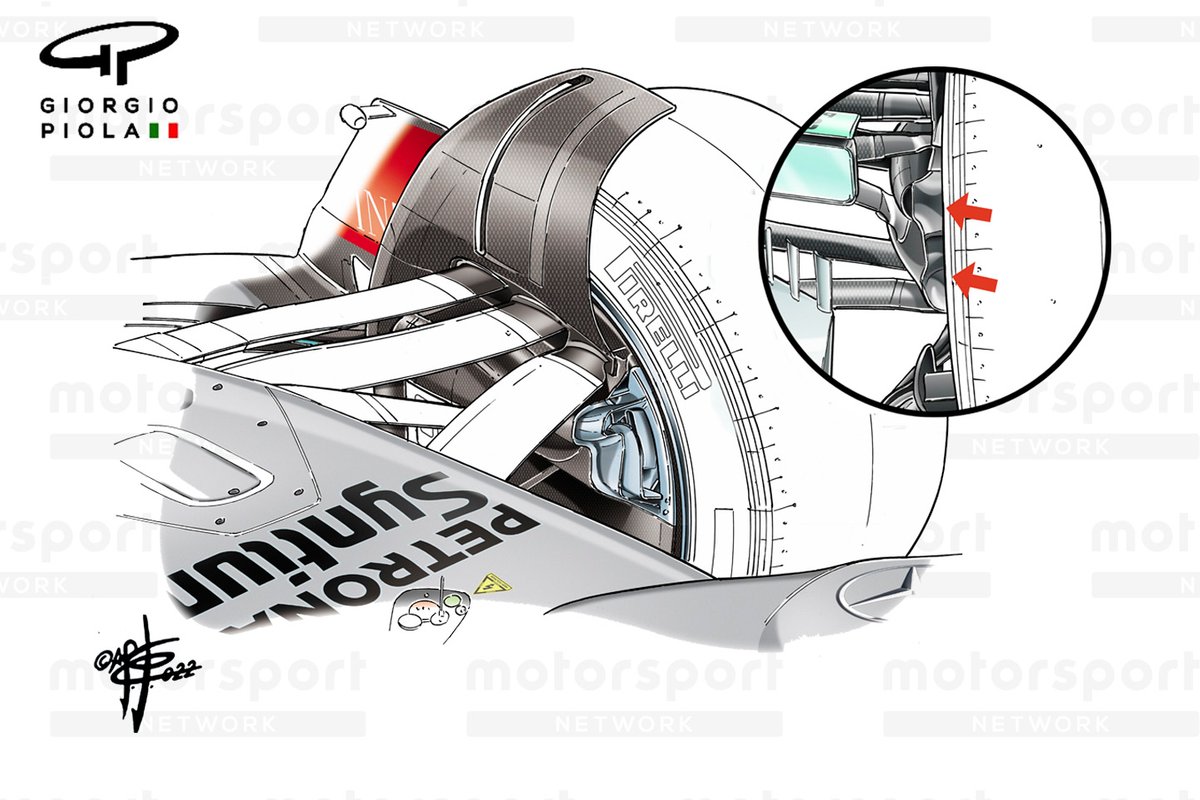
Mercedes W13 front brake duct exit scoop comparison
Photo by: Giorgio Piola
The team also made another change to an area of the car we’ve seen it tackle before, with the floor just ahead of the rear tire modified once more.
This area of the floor helps in managing the airflow around the rear tire and therefore can have an influence over tire squirt, the phenomenon which sees airflow pushed laterally off the tire as it deforms and contributes to a weakening of the diffuser’s performance.
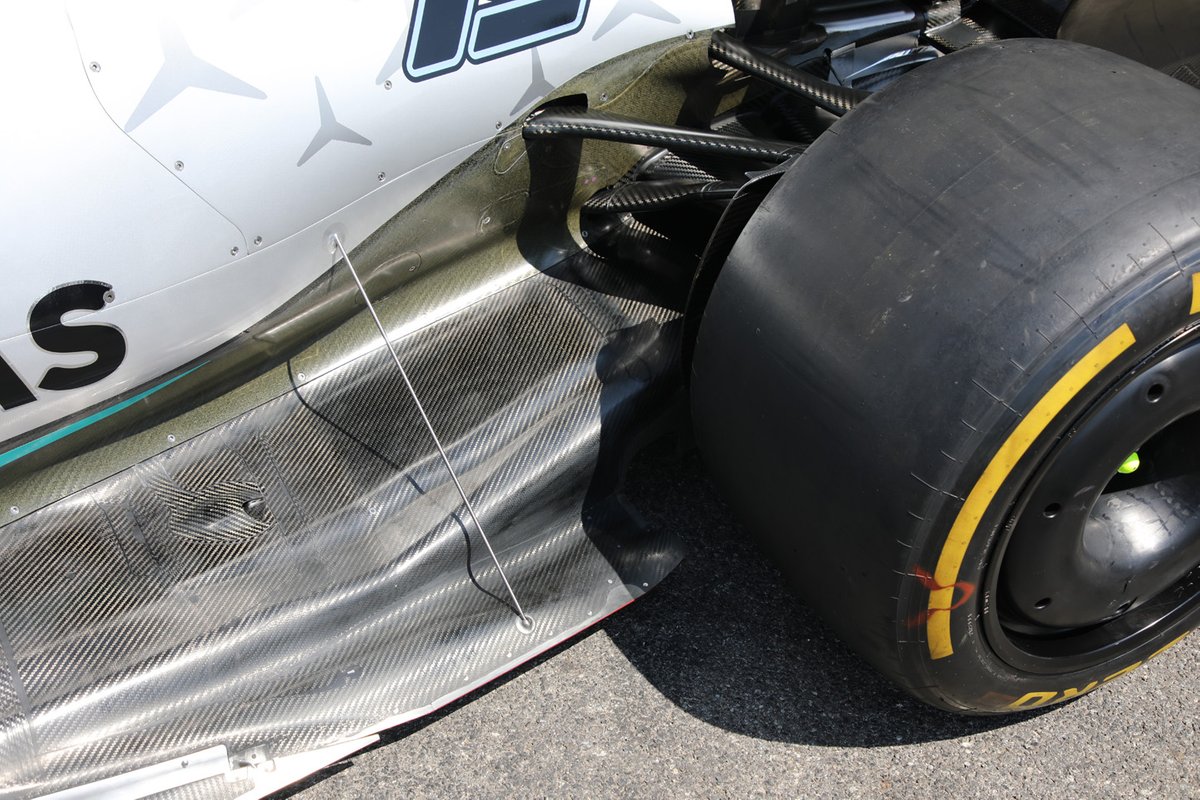
Mercedes W13 rear detail
Photo by: Giorgio Piola



